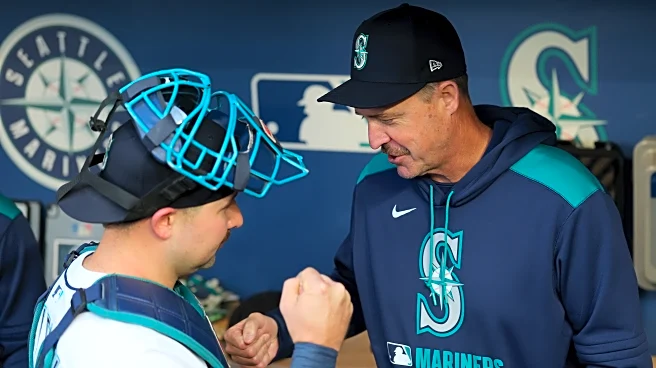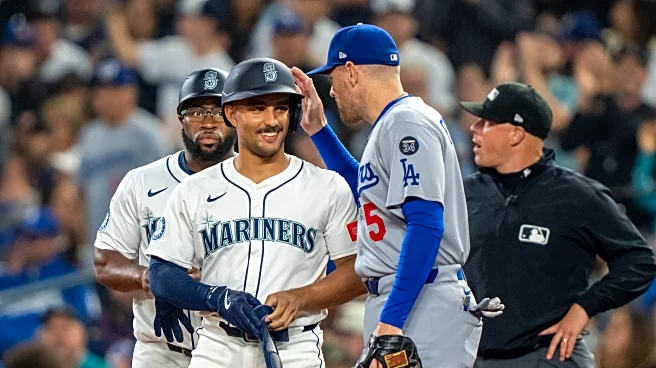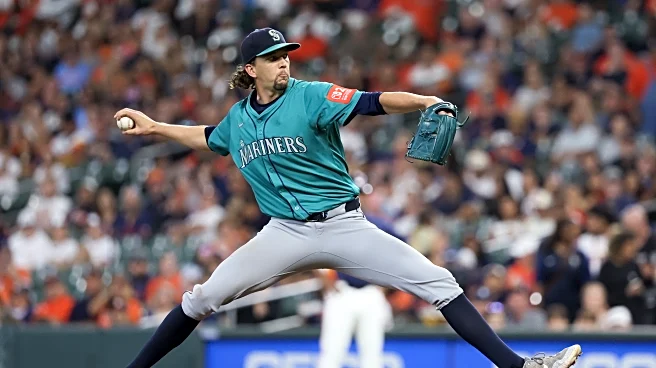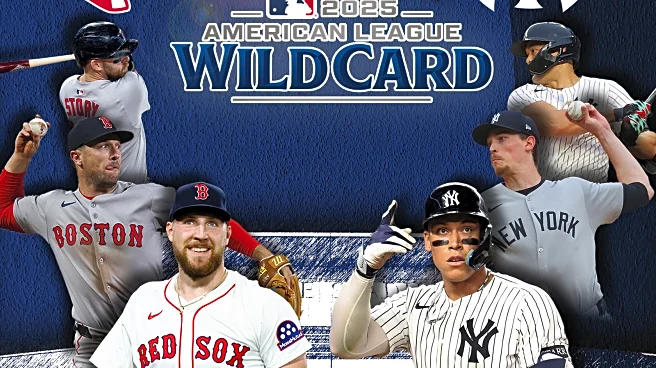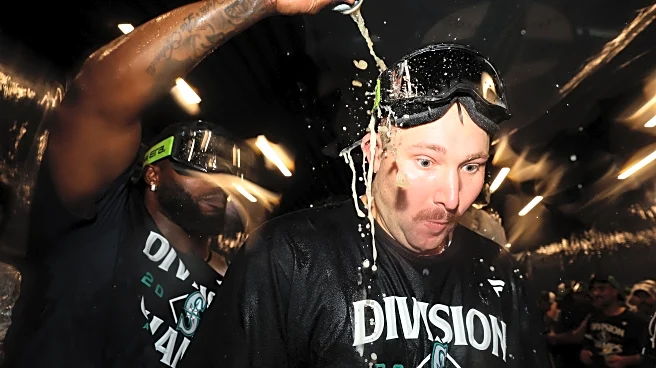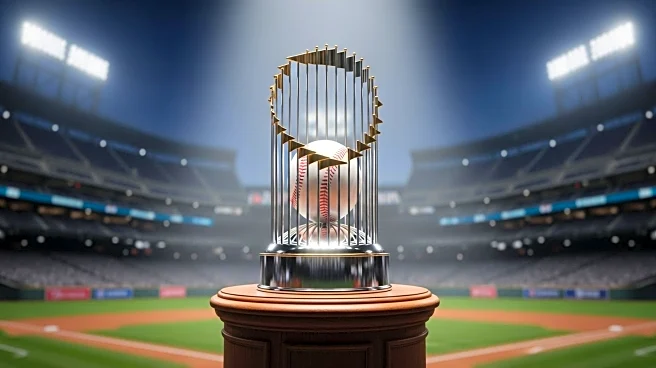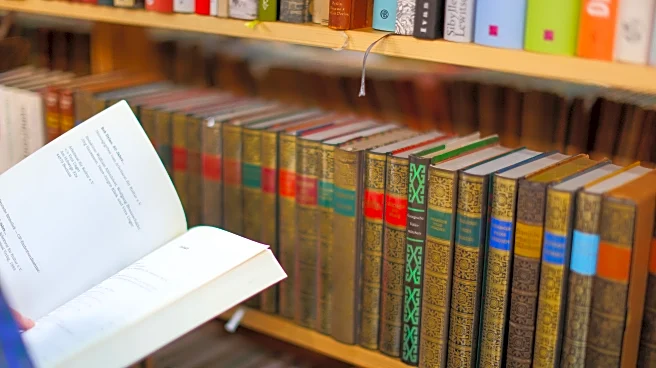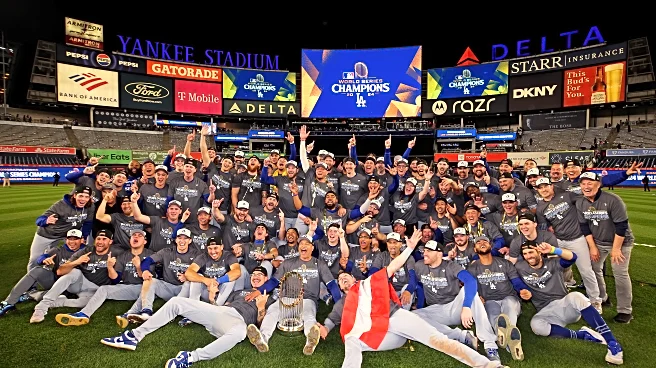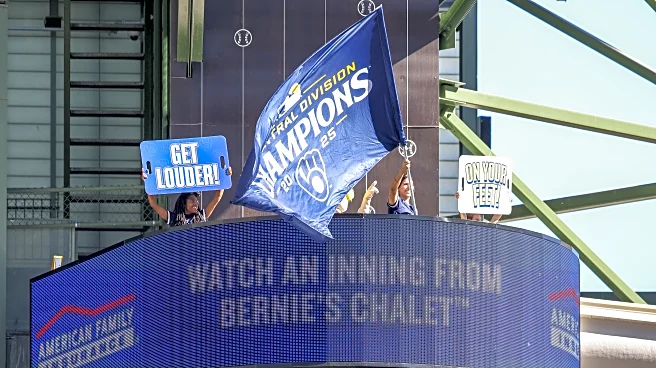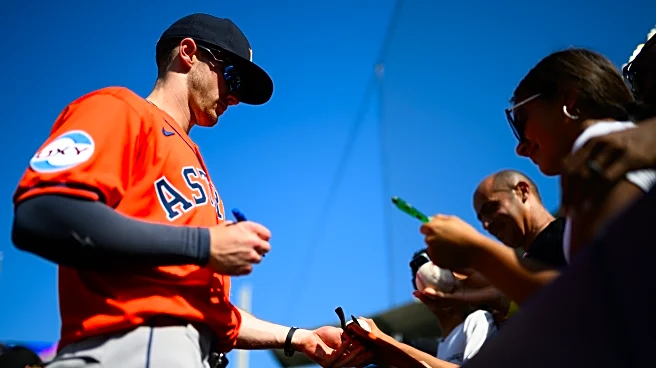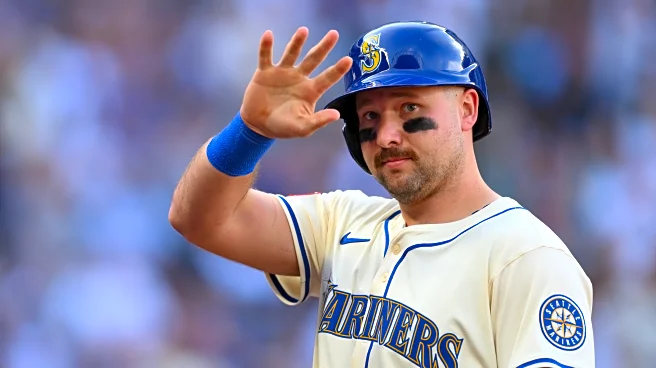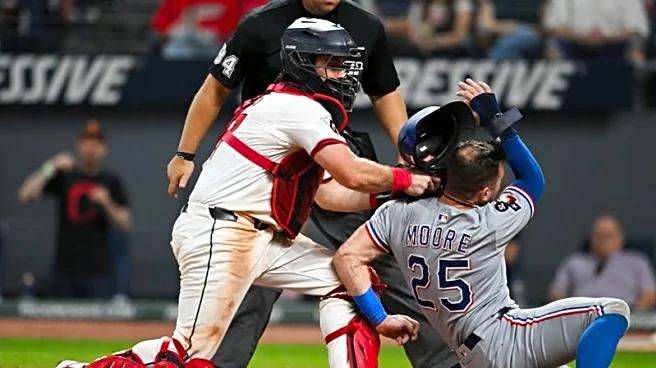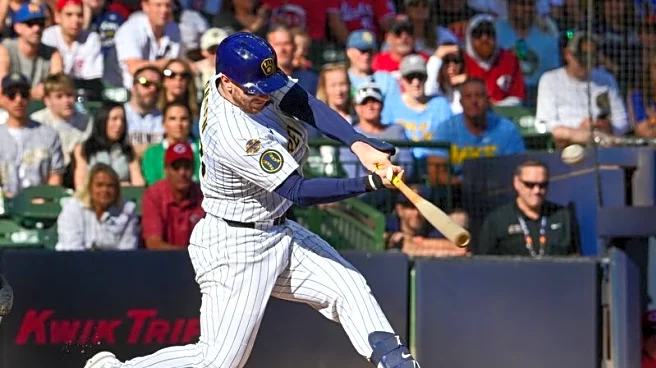The Mariners are a good team.
It’s the first thing Jerry Dipoto told us at the beginning of the offseason, right after the Mariners finished 85-77 and missed the playoffs by a game.
“We have a good team.”
See?
Good is subjective, but Dipoto was arguably correct. From 2022 to 2024, the Mariners had the seventh best run differential, ninth most fWAR, and 11th best record in MLB. Still, good seemed to be good for nothing, as they missed the playoffs in back-to-back to seasons. Dipoto acknowledged this at
the time.
“We’re just having a tough time figuring out how to climb the wall from a good team to a very good team or a great team. That’s going to be our challenge this offseason.”
Did they climb that wall in 2025?
Yes and no
The Mariners in 2025 won 90 games. They won the AL West for the first time since 2001. They secured a bye in the first round of the playoffs and enter the postseason with the best odds to win the World Series. It was the most successful and compelling Mariners’ season in nearly a quarter century.
But…
They weren’t much different.
That was true from the outset. The Mariners preseason projections were nearly identical to those of the past, which was not a surprise, as their roster hadn’t really changed. Some systems were more bullish (ZiPS), and some were less (Steamer), but most agreed the Mariners were “in the mix” for 85-87 wins — roughly equivalent to Astros and Rangers, and far removed from the great teams in MLB.
Steamer specifically pegged them at 40.5 fWAR in the preseason. That wound up looking quite prescient: the Mariners posted 40.7 fWAR in 2025, or ninth most in MLB.
They also posted the ninth most fWAR in team history. They squeaked past the 2024 squad for the second best mark of Dipoto’s tenure; they finished well behind the 2023 squad, as his one (arguably) great roster.
The 2025 Mariners were another “good” team on paper, an exemplar for the Retool Era.
How the West was won
So how did the Mariners transcend from good on paper to their most accomplished season of the last 24 years?
Well, in the most satisfying way imaginable: they beat the brakes off the AL West.
The Mariners went 34-18 against the AL West in 2025. Only the Dodgers were better against intra-division opponents. That includes an utter throttling of the Rangers, going 10-3 with a +25 run differential, and three nights in Houston that all but clinched the AL West.
This is a tricky point to make, in terms of distinguishing from the past. The Mariners dominated the West in 2023 and 2024 as well. In fact, only the Dodgers have won more games against their division since MLB changed its scheduling policy in 2023. But the AL West looked like a relative tie this year, making those head-to-head matchups especially crucial. Credit to the Mariners for taking the largest portion from that pot of wins.
It’s also necessary to acknowledge the Astros and Rangers did a bit of the lifting: the Mariners didn’t run away with the division, but simply outlasted their opponents.
The Astros were the most injured team in MLB. Nearly every key player on their roster missed some time. Baseball Prospectus’ injury ledger showed the Astros lead MLB in injuries, with more than 30% of their preseason projected WARP lost to the IL — double that of the Mariners. While the Astros held their ground early, the injuries eventually caught up, and they finished four games below .500 after the All-Star break. The dynamic of the final series in Houston would likely have been much different had their best players been available before and during the matchup.

The Rangers were beset not just by poor health but poor luck. They finished with the eighth best run differential in MLB — seven runs ahead of the Mariners — making them the league’s second unluckiest team. Now, I’m a bit skeptical the Rangers were a highly competitive group simply bested by Pythagorus; a handful of blowout wins really skewed their run differential (and fWAR didn’t think too highly of them). But they did finish eight games below .500 in one-run games, while the Astros and Mariners had tremendous fortune, finishing second and third, respectively.

The bounce back
Then there’s Cal Raleigh. In many ways, it was his season.
He swatted 60 home runs, becoming the first Mariner to ever lead MLB in homers and shattering a number of records in the process. He hit long homers, he hit short homers, he hit clutch homers, and he hit homers just for fun; he hit them from both sides of the plate and sometimes in the same game. He posted the fifth most fWAR in Mariners’ history (9.1) and finished a narrow third in MLB, behind only Aaron Judge (10.1) and Shohei Ohtani (9.4). It’s hard to see the Mariners atop the AL West had Cal simply played to his otherwise excellent top-20 batter projection.
But it wasn’t just Cal. At several points throughout the year, the Mariners appeared to have the best lineup in MLB.
This was true from day one. The Mariners in April posted their best month of the Statcast era. They were drawing walks, hitting dingers, and now (crucially) protecting with two strikes. It was somewhat jarring to see the same group who’d struggled for much of the previous season now playing among the league’s best. Julio Rodríguez bounced back, Jorge Polanco bounced back, J.P. Crawford bounced back, Randy Arozarena continued to bounce, and Dominic Canzone bounced for the first time.
They got even better at the trade deadline. Josh Naylor posted a 137 wRC+ and 1.8 fWAR after joining the team from Arizona, making him the top player ever acquired by the Mariners midseason. And while Eugenio Suárez struggled initially following the trade, he did eventually slug enough homers to represent a notable improvement over his predecessor.
The Mariners finished the season with a 113 wRC+ — the second best in MLB, and third best in team history.

But it wasn’t always so rosy.
For as well as the Mariners did at the deadline, they sank most of that value in the months leading up with Leody Tavares, Dylan Moore, Donovan Solano and Rowdy Tellez. The offense was rather awful in May and June as the team slumped towards irrelevance. They were highly susceptible to their distribution of dingers, and “0-for-many with RISP” was plastered on the ROOT scorebug for days at a time. Their flexibility often appeared suffocating and demanded an extreme platoon-and-pinch-hit strategy that never quite worked.
And even the best version of the lineup post-deadline was only effective at the plate. They were by far the worst defensive team to make the playoffs, with several players who looked better fit for DH, and they were by far the worst team in MLB at advancing bases.
The 2025 Mariners’ lineup was one of top collection of hitters ever assembled in Seattle. That is a massive achievement and the biggest takeaway of the season. But their lack of consistency and refinement is what ultimately kept them from something more. They were good, nonetheless.
To health
Pitching was often the great limiter of the Mariners in 2025. They finished 18th in fWAR. While they ranked more favorably by ERA and FIP, that was a product of massive home/road splits and the friendly confines of T-Mobile Park.
The pitching was bound to be a let down, as expectations seemed far from reality. Yes, pitching was their strength in the past, but it was never quite the best in MLB, much less “the best ever,” as some had dubbed.
And the staff had always been healthy — that was not the case in 2025. Logan Gilbert, George Kirby and Bryce Miller each spent time on the injured list. While Gilbert and Kirby were effective upon return, Miller was much worse, and they each pitched considerably less than expected. That left Emerson Hancock and Logan Evans to pick up 31 starts combined, and (understandably) neither could make up the difference.
It wasn’t all bad. Bryan Woo had a career year. He was about as effective as he’d been in 2024, with the same fastball-heavy approach. This year, however, he pitched significantly more, going six innings in 27 of 30 starts, escaping the questions of durability that shrouded his first two seasons. While the lineup is my top takeaway from 2025, Woo’s emergence as a top-20 arm is a close second.
Luis Castillo alleviated concerns about his “aging curve.” He’s not the tip-top pitcher he once was, but he provided another full season of steady quality in the middle of the rotation. It’s hard to think of where they’d be without him.
The bullpen was a mix. Andrés Muñoz and Gabe Speier were superb, and Matt Brash returned from Tommy John surgery without missing a beat. Eduard Bazardo became Dan Wilson’s “ol’ reliable,” throwing the sixth most innings in MLB. And Caleb Ferguson was a solid deadline addition as the lesser-leverage lefty. The back of the Mariners’ bullpen was, once again, great.
But they struggled with depth. Carlos Vargas finished just behind Bazardo in innings pitched but without the same success; his reliance on grounders seemed a curse in front of an awful infield defense. The rest of the bullpen was filled with a mishmash of I-5 shuttlers, with any hint of success quickly dashed by dingers.

There’s one stat I think best summarizes the staff in 2025:
- 4.77 FIP in the 5th and 6th innings (27th in MLB)
- 3.68 FIP in all other innings (2nd in MLB)
The 2025 Mariners, at their best, continued to look like the AL’s premier pitching powerhouse. The top-level talent is surely still there. But the mushy middle was mushier than ever, and too many games were punted to the pile. They were not good enough in 2025. That’s likely to change.
Going for more
And so, with some of the best and worst players in the league, the Mariners were incredibly — and measurably — inconsistent. September began with the darkest days of the season, and wrapped with a comfortable homestand with everything in hand. They defined 2025 with a 17-1 stretch, erasing months of idle of play. It was the difference between good on paper and greatness in the rafters. It was all that mattered.

If there’s anything the Mariners had shown us in the Retool Era, it’s that they could reliably finish “in the mix.” What they’d yet to show is whether a perpetual state of mixing could ever be enough to win the AL West, as the minimum threshold for adulation. This season served as proof of concept for the Mariners Baseball Project, even if the concept was undoubtedly the same. They accomplished all that was asked of them in 2025; they accomplished nothing more.
What’s next is unclear. I simply cannot imagine a time when the Mariners won’t be capable of a season like the last five. They have perhaps the best collection of top-level players in MLB. They remain one of the youngest teams in the league. They have no “bad” long-term contracts (forgive me). And their prospects are admired by many in the space. There is a legitimately talented and “sustainable” system in Seattle — one capable of winning the AL West. They are free to ride the highs and lows of the paradigm they set forth, endorsed, nourished, and at long last vindicated.
But September revealed both the potential and the appetite for this organization to achieve more. It gave them something tangible. It gave them something to defend.
“I would be embarrassed,” Dipoto said last week, “if our next 10 years aren’t better than our last 10 years.”
The Retool Era is now dead.
Good.
